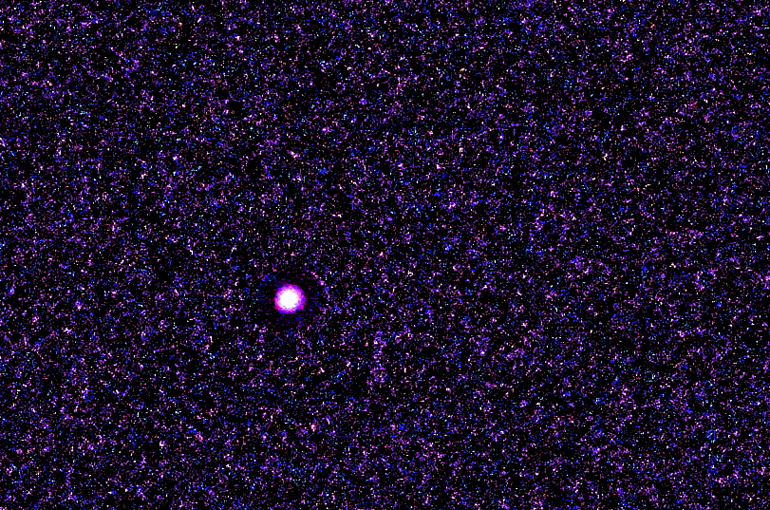
Jupiter and lots of purplish-pinkish light noise.
As I've mentioned before, astronomy and astrophotography aren't easy hobbies to execute when contending with the lights of Central Florida. Nevertheless, I try my best to glance at the heavens now and then, and to take photos of planets, satellites and shooting stars at times.
Last week, Jupiter was at its closest approach to Earth of the year, a great time for viewing the gas giant and four of its biggest moons: Io, Europa, Ganymede and Callisto. In addition, 2009 is a year of spectacular phenomena when it comes to Jupiter's 63 natural satellites. Tonight, for example, two of its moons will be seen from Earth in a 100 percent occultation, or when one passes directly in front of the other. Two others will rendezvous for a total lunar eclipse, or when one casts a shadow on another. More on that, including cool images, here.
(To find Jupiter, look slightly west of south most anytime of the night. It's the big bright thing in the sky. You can't miss it. For a sky chart and easy navigation instructions, visit and register for Sky & Telescope's interactive version here.)
Last night, the planet looked brilliant as I stepped out of my car after getting home from work. I quickly set up my tripod and made several exposures of Jupiter. But in none, however, were the four largest moons visible, a sight that should be achieved through even my 500mm lens. The light interference again got the best of me. I was disappointed.
Frustrated, I messed up one of the images in editing by boosting the exposure and saturation. That ended up highlighting the extreme noise in the photo that is achieved through the camera's high ISO, which was set at 2000. I ended up with one of those psychedelic posters that were so popular a decade ago.
I have asked myself for a telescope for Christmas, but I'm not getting my hopes up.



No comments:
Post a Comment